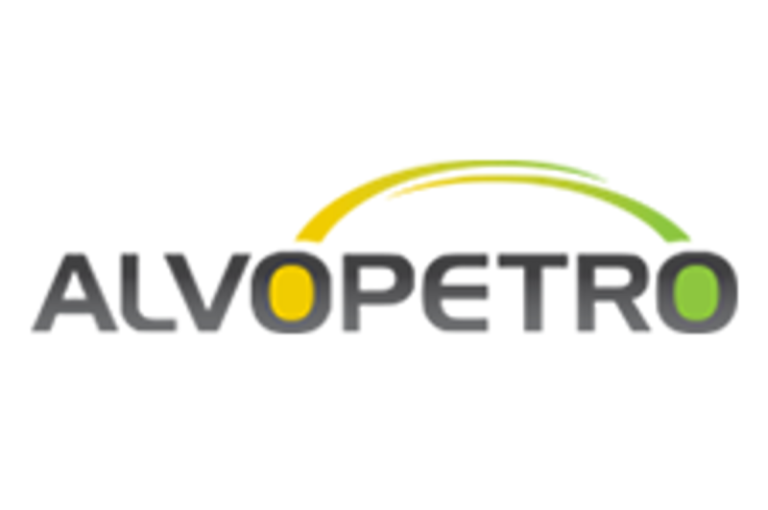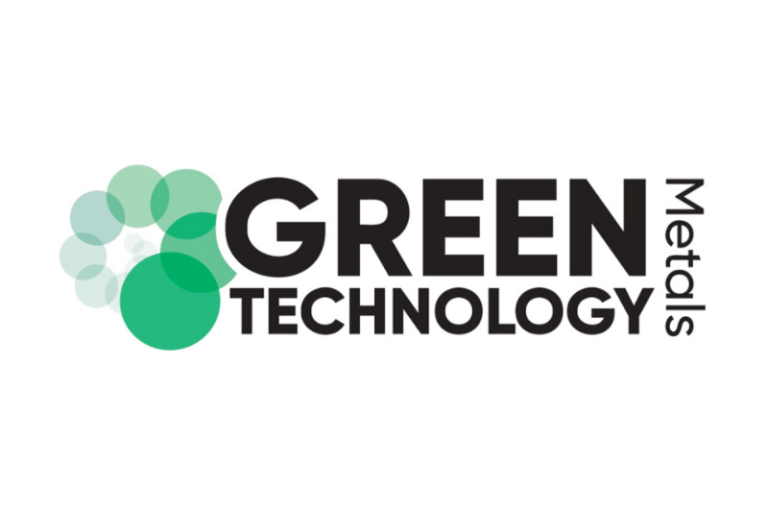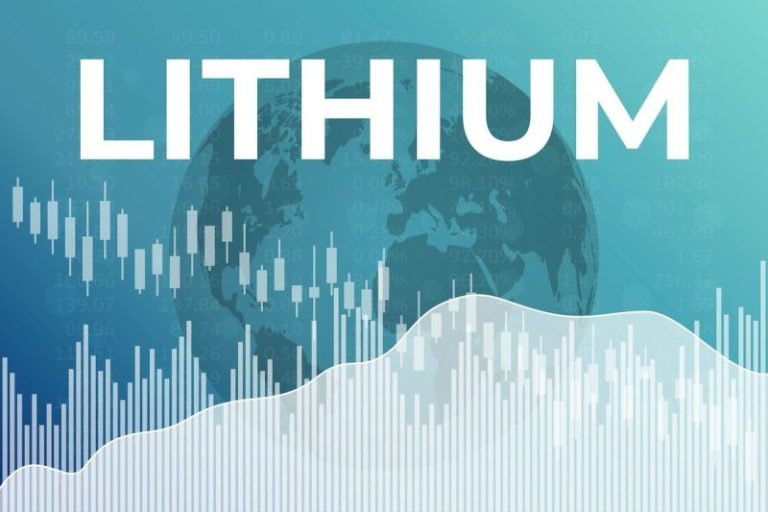Alvopetro Energy Ltd. (TSXV: ALV,OTC:ALVOF) (OTCQX: ALVOF) announces an operational update and financial results for the three and six months ended June 30 2025.
All references herein to $ refer to United States dollars, unless otherwise stated and all tabular amounts are in thousands of United States dollars, except as otherwise noted.
President & CEO, Corey C. Ruttan commented:
‘Q2 included our first quarter of sales from our recently added Western Canadian assets and overall sales volumes continued to be very strong averaging 2,436 boepd, up 50% from Q2 2024, and consistent with Q1 2025. We have a considerable amount of activity underway and we are looking forward to an exciting Q3 with the completion and tie-in of our 183-D4 well, our Caburé Unit development wells, and our two most recently drilled multi-lateral wells in Western Saskatchewan . Our 2025 capital program is organically funded and focused on high rate of return opportunities in Brazil and also now in the Western Canadian Sedimentary Basin.’
Operational Update
July Sales Volumes
|
Natural gas, NGLs and crude oil sales:
|
July
2025
|
June
2025
|
Q2
2025
|
|
Brazil:
|
|
|
|
|
Natural gas (Mcfpd), by field:
|
|
|
|
|
Caburé
|
11,122
|
11,804
|
11,811
|
|
Murucututu
|
1,751
|
1,446
|
1,191
|
|
Total natural gas (Mcfpd)
|
12,873
|
13,250
|
13,002
|
|
NGLs (bopd)
|
130
|
147
|
128
|
|
Oil (bopd)
|
9
|
9
|
3
|
|
Total (boepd) – Brazil
|
2,284
|
2,365
|
2,298
|
|
Canada:
|
|
|
|
|
Oil (bopd) – Canada
|
134
|
149
|
138
|
|
Total Company – boepd (1)
|
2,418
|
2,514
|
2,436
|
|
(1) Alvopetro reported volumes are based on sales volumes which, due to the timing of sales deliveries, may differ from production volumes.
|
|
July sales volumes averaged 2,418 boepd, including 2,284 boepd from Brazil (with natural gas sales of 12.9 MMcfpd, associated natural gas liquids sales from condensate of 130 bopd, and oil sales of 9 bopd) and 134 bopd from oil sales in Canada , based on field estimates.
Quarterly Natural Gas Pricing Update
Effective August 1, 2025 , our natural gas price under our long-term gas sales agreement was adjusted to BRL1.90 /m 3 and will apply to all natural gas sales from August 1, 2025 to October 31, 2025 . Based on our average heat content to date and the July 31, 2025 BRL/USD exchange rate of 5.60, our expected realized price at the new contracted price is $10.27 /Mcf, net of applicable sales taxes, a decrease of 3% from the Q2 2025 realized price of $10.62 /Mcf due mainly to reduced Henry Hub and Brent prices in the second quarter. Amounts ultimately received in equivalent USD will be impacted by exchange rates in effect during the period August 1, 2025 to October 31, 2025 .
Development Activities – Brazil
On our 100% owned Murucututu field, the 183-D4 well was drilled in the second quarter to a total measured depth of 3,072 metres. The well encountered the Caruaçu Member of the Maracangalha Formation 106 metres structurally updip of our 183-A3 well which has been on production since the fourth quarter of 2024. Based on cased-hole gamma ray logs and normalized gas while drilling, the well encountered potential natural gas pay in the Caruaçu Member of the Maracangalha Formation, with an aggregate 61 metres total vertical depth (‘TVD’) of potential natural gas pay between 2,439 and 2,838 meters TVD. We’ve now completed the well in seven intervals and expect to have the well on production later in the third quarter. A total of $3.3 million of capital expenditures are estimated on the field in the second half of 2025, including costs for the 183-D4 completion.
Our joint development on the unitized area (‘the Unit’) which includes our Caburé field commenced in the second quarter and three wells (1.7 net) have now been drilled. The fourth well (0.6 net) is expected to be drilled later in the third quarter. Alvopetro’s share of these planned unit development costs in the second half of 2025 is anticipated to be $5.5 million . The timing of drilling the fifth development well (0.6 net) is subject to the receipt of all necessary regulatory approvals.
Development Activities – Western Canada
In June, we further expanded our joint Mannville focused land based to 17,780 gross acres (8,890 net acres) and in July, two additional multi-lateral wells (1.0 net) were drilled with an aggregate of over 19 kilometers of open hole reservoir contact. Both wells will now be completed and equipped and are expected to be on production later in the third quarter. We expect to drill our next two multi-lateral wells (1.0 net) starting later this year.
Financial and Operating Highlights – Second Quarter of 2025
- Average daily sales in Q2 2025 were 2,436 boepd (+50% from Q2 2024 and consistent with Q1 2025 sales of 2,446 boepd). In Brazil , daily sales averaged 2,298 boepd (+41% compared to Q2 2024) and in Canada , oil sales commenced in April 2025 , contributing 138 bopd in the quarter.
- Our average realized natural gas price was $10.62 /Mcf in Q2 2025 (-10% from Q2 2024 and +2% from Q1 2025). Our overall averaged realized sales price per boe was $63.20 /boe (-12% from Q2 2024 and -1% from Q1 2025).
- With higher sales volumes, our natural gas, oil and condensate revenue increased to $14.0 million (+31% from Q2 2024).
- Our operating netback in the quarter was $54.72 per boe, a decrease of $9.58 per boe compared to Q2 2024 due mainly to lower realized sales prices as well as higher royalties. Compared to Q1 2025, our operating netback increased $3.95 per boe with lower royalties partially offset by lower realized prices.
- We generated funds flows from operations of $10.4 million ( $0.28 per basic and $0.27 per diluted share), increases of $2.5 million compared to Q2 2024 and $1.1 million compared to Q1 2025.
- We reported net income of $6.8 million ( $0.18 per basic and diluted share), an increase of $4.5 million compared to Q2 2024 due to higher sales volumes as well as foreign exchange gains (compared to foreign exchange losses in Q2 2024), partially offset by lower realized prices and higher royalties, production expenses, depletion and depreciation expense and tax expense.
- Capital expenditures totaled $9.0 million , including drilling costs for the 183-D4 well on Alvopetro’s 100% Murucututu field as well as Alvopetro’s share of costs incurred on unit development, including costs for two (1.1 net) of five development wells (2.8 net) which commenced drilling in the quarter.
- Our working capital surplus was $6.8 million as of June 30, 2025 , decreasing $2.9 million from March 31, 2025 .
The following table provides a summary of Alvopetro’s financial and operating results for the periods noted. The consolidated financial statements with the Management’s Discussion and Analysis (‘MD&A’) are available on our website at www.alvopetro.com and will be available on the SEDAR+ website at www.sedarplus.ca .
|
As at and Three Months Ended
June 30,
|
As at and Six Months Ended
June 30,
|
|
2025
|
2024
|
Change
|
2025
|
2024
|
Change (%)
|
|
Financial
|
|
|
|
|
|
|
|
($000s, except where noted)
|
|
|
|
|
|
|
|
Natural gas, oil and condensate sales
|
14,010
|
10,672
|
31
|
28,023
|
22,424
|
25
|
|
Net income
|
6,830
|
2,350
|
191
|
12,900
|
6,900
|
87
|
|
Per share – basic ($) (1)
|
0.18
|
0.06
|
200
|
0.35
|
0.19
|
84
|
|
Per share – diluted ($) (1)
|
0.18
|
0.06
|
200
|
0.34
|
0.18
|
89
|
|
Cash flows from operating activities
|
10,473
|
8,860
|
18
|
19,290
|
17,073
|
13
|
|
Per share – basic ($) (1)
|
0.28
|
0.24
|
17
|
0.52
|
0.46
|
13
|
|
Per share – diluted ($) (1)
|
0.28
|
0.24
|
17
|
0.51
|
0.45
|
13
|
|
Funds flow from operations (2)
|
10,366
|
7,910
|
31
|
19,588
|
16,423
|
19
|
|
Per share – basic ($) (1)
|
0.28
|
0.21
|
33
|
0.53
|
0.44
|
20
|
|
Per share – diluted ($) (1)
|
0.27
|
0.21
|
29
|
0.52
|
0.44
|
18
|
|
Dividends declared
|
3,660
|
3,296
|
11
|
7,303
|
6,592
|
11
|
|
Per share (1) (2)
|
0.10
|
0.09
|
11
|
0.20
|
0.18
|
11
|
|
Capital expenditures
|
8,986
|
3,437
|
161
|
17,361
|
5,876
|
195
|
|
Cash and cash equivalents
|
15,001
|
19,681
|
(24)
|
15,001
|
19,681
|
(24)
|
|
Net working capital (2)
|
6,838
|
14,692
|
(53)
|
6,838
|
14,692
|
(53)
|
|
Weighted average shares outstanding
|
|
|
|
|
|
|
|
Basic (000s) (1)
|
37,261
|
37,286
|
–
|
37,278
|
37,282
|
–
|
|
Diluted (000s) (1)
|
37,795
|
37,600
|
1
|
37,770
|
37,647
|
–
|
|
Operations
|
|
|
|
|
|
|
|
Average daily sales volumes (3) :
|
|
|
|
|
|
|
|
Brazil:
|
|
|
|
|
|
|
|
Natural gas (Mcfpd), by field:
|
|
|
|
|
|
|
|
Caburé (Mcfpd)
|
11,811
|
8,822
|
34
|
11,761
|
9,029
|
30
|
|
Murucututu (Mcfpd)
|
1,191
|
422
|
182
|
1,639
|
426
|
285
|
|
Total natural gas (Mcfpd)
|
13,002
|
9,244
|
41
|
13,400
|
9,455
|
42
|
|
NGLs – condensate (bopd)
|
128
|
76
|
68
|
131
|
77
|
70
|
|
Oil (bopd)
|
3
|
12
|
(75)
|
7
|
12
|
(42)
|
|
Total (boepd) – Brazil
|
2,298
|
1,629
|
41
|
2,371
|
1,665
|
42
|
|
|
|
|
|
|
|
|
Canada:
|
|
|
|
|
|
|
|
Oil (bopd) – Canada
|
138
|
–
|
–
|
69
|
–
|
–
|
|
|
|
|
|
|
|
|
Total Company (boepd)
|
2,436
|
1,629
|
50
|
2,440
|
1,665
|
47
|
|
|
|
|
|
|
|
|
Average realized prices (2) :
|
|
|
|
|
|
|
|
Natural gas ($/Mcf)
|
10.62
|
11.83
|
(10)
|
10.53
|
12.21
|
(14)
|
|
NGLs – condensate ($/bbl)
|
72.32
|
92.27
|
(22)
|
76.78
|
90.06
|
(15)
|
|
Oil ($/bbl)
|
47.10
|
71.87
|
(34)
|
48.31
|
68.54
|
(30)
|
|
Total ($/boe)
|
63.20
|
71.97
|
(12)
|
63.43
|
74.00
|
(14)
|
|
|
|
|
|
|
|
|
Operating netback ($/boe) (2)
|
|
|
|
|
|
|
|
Realized sales price
|
63.20
|
71.97
|
(12)
|
63.43
|
74.00
|
(14)
|
|
Royalties
|
(2.97)
|
(1.94)
|
53
|
(5.28)
|
(1.98)
|
167
|
|
Production expenses
|
(5.37)
|
(5.73)
|
(6)
|
(5.34)
|
(6.77)
|
(21)
|
|
Transportation expenses
|
(0.14)
|
–
|
–
|
(0.07)
|
–
|
–
|
|
Operating netback
|
54.72
|
64.30
|
(15)
|
52.74
|
65.25
|
(19)
|
|
Operating netback margin (2)
|
87 %
|
89 %
|
(2)
|
83 %
|
88 %
|
(6)
|
|
Notes:
|
|
(1)
|
Per share amounts are based on weighted average shares outstanding other than dividends per share, which is based on the number of common shares outstanding at each dividend record date. The weighted average number of diluted common shares outstanding in the computation of funds flow from operations and cash flows from operating activities per share is the same as for net income per share.
|
|
(2)
|
See ‘Non-GAAP and Other Financial Measures’ section within this news release.
|
|
(3)
|
Alvopetro reported volumes are based on sales volumes which, due to the timing of sales deliveries, may differ from production volumes.
|
Q2 2025 Results Webcast
Alvopetro will host a live webcast to discuss our Q2 2025 financial results at 8:00 am Mountain time on Thursday August 7, 2025. Details for joining the event are as follows:
DATE: August 7, 2025
TIME : 8:00 AM Mountain/ 10:00 AM Eastern
LINK: https://us06web.zoom.us/j/87200931927
DIAL-IN NUMBERS: https://us06web.zoom.us/u/kdLidYPIoO
WEBINAR ID: 872 0093 1927
The webcast will include a question-and-answer period. Online participants will be able to ask questions through the Zoom portal. Dial-in participants can email questions directly to socialmedia@alvopetro.com .
Corporate Presentation
Alvopetro’s updated corporate presentation is available on our website at:
http://www.alvopetro.com/corporate-presentation .
Social Media
Follow Alvopetro on our social media channels at the following links:
Twitter – https://twitter.com/AlvopetroEnergy
Instagram – https://www.instagram.com/alvopetro/
LinkedIn – https://www.linkedin.com/company/alvopetro-energy-ltd
Alvopetro Energy Ltd. is deploying a balanced capital allocation model where we seek to reinvest roughly half our cash flows into organic growth opportunities and return the other half to stakeholders. Alvopetro’s organic growth strategy is to focus on the best combinations of geologic prospectivity and fiscal regime. Alvopetro is balancing capital investment opportunities in Canada and Brazil where we are building off the strength of our Caburé and Murucututu natural gas fields and the related strategic midstream infrastructure.
Neither the TSX Venture Exchange nor its Regulation Services Provider (as that term is defined in the policies of the TSX Venture Exchange) accepts responsibility for the adequacy or accuracy of this news release.
Abbreviations:
|
$000s
|
=
|
thousands of U.S. dollars
|
|
boepd
|
=
|
barrels of oil equivalent (‘boe’) per day
|
|
bopd
|
=
|
barrels of oil and/or natural gas liquids (condensate) per day
|
|
BRL
|
=
|
Brazilian Real
|
|
e 3 m 3 /d
|
=
|
thousand cubic metre per day
|
|
m 3
|
=
|
cubic metre
|
|
m 3 /d
|
=
|
cubic metre per day
|
|
Mcf
|
=
|
thousand cubic feet
|
|
Mcfpd
|
=
|
thousand cubic feet per day
|
|
MMcf
|
=
|
million cubic feet
|
|
MMcfpd
|
=
|
million cubic feet per day
|
|
NGLs
|
=
|
natural gas liquids (condensate)
|
|
Q1 2025
|
=
|
three months ended March 31, 2025
|
|
Q2 2024
|
=
|
three months ended June 30, 2024
|
|
Q2 2025
|
=
|
three months ended June 30, 2025
|
|
USD
|
=
|
United States dollars
|
|
GAAP or IFRS
|
=
|
IFRS Accounting Standards
|
Non-GAAP and Other Financial Measures
This news release contains references to various non-GAAP financial measures, non-GAAP ratios, capital management measures and supplementary financial measures as such terms are defined in National Instrument 52-112 Non-GAAP and Other Financial Measures Disclosure . Such measures are not recognized measures under GAAP and do not have a standardized meaning prescribed by IFRS and might not be comparable to similar financial measures disclosed by other issuers. While these measures may be common in the oil and gas industry, the Company’s use of these terms may not be comparable to similarly defined measures presented by other companies. The non-GAAP and other financial measures referred to in this report should not be considered an alternative to, or more meaningful than measures prescribed by IFRS and they are not meant to enhance the Company’s reported financial performance or position. These are complementary measures that are used by management in assessing the Company’s financial performance, efficiency and liquidity and they may be used by investors or other users of this document for the same purpose. Below is a description of the non-GAAP financial measures, non-GAAP ratios, capital management measures and supplementary financial measures used in this news release. For more information with respect to financial measures which have not been defined by GAAP, including reconciliations to the closest comparable GAAP measure, see the ‘ Non-GAAP Measures and Other Financial Measures ‘ section of the Company’s MD&A which may be accessed through the SEDAR+ website at www.sedarplus.ca .
Non-GAAP Financial Measures
Operating Netback
Operating netback is calculated as natural gas, oil and condensate revenues less royalties, production expenses, and transportation expenses. This calculation is provided in the ‘ Operating Netback ‘ section of the Company’s MD&A using our IFRS measures. The Company’s MD&A may be accessed through the SEDAR+ website at www.sedarplus.ca . Operating netback is a common metric used in the oil and gas industry used to demonstrate profitability from operations.
Non-GAAP Financial Ratios
Operating Netback per boe
Operating netback is calculated on a per unit basis, which is per barrel of oil equivalent (‘boe’). It is a common non-GAAP measure used in the oil and gas industry and management believes this measurement assists in evaluating the operating performance of the Company. It is a measure of the economic quality of the Company’s producing assets and is useful for evaluating variable costs as it provides a reliable measure regardless of fluctuations in production. Alvopetro calculated operating netback per boe as operating netback divided by total sales volumes (boe). This calculation is provided in note 3 of the interim condensed consolidated financial statements and in the ‘ Operating Netback ‘ section of the Company’s MD&A using our IFRS measures. The Company’s MD&A may be accessed through the SEDAR+ website at www.sedarplus.ca . Operating netback is a common metric used in the oil and gas industry used to demonstrate profitability from operations on a per boe basis.
Operating netback margin
Operating netback margin is calculated as operating netback per boe divided by the realized sales price per boe. Operating netback margin is a measure of the profitability per boe relative to natural gas, oil and condensate sales revenues per boe and is calculated as follows:
|
Three Months Ended June 30,
|
Six Months Ended June 30,
|
|
2025
|
2024
|
2025
|
2024
|
|
Operating netback – $ per boe
|
54.72
|
64.30
|
52.74
|
65.25
|
|
Average realized price – $ per boe
|
63.20
|
71.97
|
63.43
|
74.00
|
|
Operating netback margin
|
87 %
|
89 %
|
83 %
|
88 %
|
Funds Flow from Operations Per Share
Funds flow from operations per share is a non-GAAP ratio that includes all cash generated from operating activities and is calculated before changes in non-cash working capital, divided by the weighted average shares outstanding for the respective period. For the periods reported in this news release the cash flows from operating activities per share and funds flow from operations per share is as follows:
|
Three Months Ended June 30,
|
Six Months Ended June 30,
|
|
$ per share
|
2025
|
2024
|
2025
|
2024
|
|
Per basic share:
|
|
|
|
|
|
Cash flows from operating activities
|
0.28
|
0.24
|
0.52
|
0.46
|
|
Funds flow from operations
|
0.28
|
0.21
|
0.53
|
0.44
|
|
|
|
|
|
|
Per diluted share:
|
|
|
|
|
|
Cash flows from operating activities
|
0.28
|
0.24
|
0.51
|
0.45
|
|
Funds flow from operations
|
0.27
|
0.21
|
0.52
|
0.44
|
Capital Management Measures
Funds Flow from Operations
Funds flow from operations is a non-GAAP capital management measure that includes all cash generated from operating activities and is calculated before changes in non-cash working capital. The most comparable GAAP measure to funds flow from operations is cash flows from operating activities. Management considers funds flow from operations important as it helps evaluate financial performance and demonstrates the Company’s ability to generate sufficient cash to fund future growth opportunities. Funds flow from operations should not be considered an alternative to, or more meaningful than, cash flows from operating activities however management finds that the impact of working capital items on the cash flows reduces the comparability of the metric from period to period. A reconciliation of funds flow from operations to cash flows from operating activities is as follows:
|
Three Months Ended June 30,
|
Six Months Ended June 30,
|
|
2025
|
2024
|
2025
|
2024
|
|
Cash flows from operating activities
|
10,473
|
8,860
|
19,290
|
17,073
|
|
Changes in non-cash working capital
|
(107)
|
(950)
|
298
|
(650)
|
|
Funds flow from operations
|
10,366
|
7,910
|
19,588
|
16,423
|
Net Working Capital
Net working capital is computed as current assets less current liabilities. Net working capital is a measure of liquidity, is used to evaluate financial resources, and is calculated as follows:
|
|
As at June 30,
|
|
|
2025
|
2024
|
|
Total current assets
|
|
22,915
|
25,300
|
|
Total current liabilities
|
|
(16,077)
|
(10,608)
|
|
Net working capital
|
|
6,838
|
14,692
|
Supplementary Financial Measures
‘ Average realized natural gas price – $/Mcf ‘ is comprised of natural gas sales as determined in accordance with IFRS, divided by the Company’s natural gas sales volumes.
‘ Average realized NGL – condensate price – $/bbl ‘ is comprised of condensate sales as determined in accordance with IFRS, divided by the Company’s NGL sales volumes from condensate.
‘ Average realized oil price – $/bbl ‘ is comprised of oil sales as determined in accordance with IFRS, divided by the Company’s oil sales volumes.
‘ Average realized price – $/boe ‘ is comprised of natural gas, condensate and oil sales as determined in accordance with IFRS, divided by the Company’s total natural gas, NGL and oil sales volumes (barrels of oil equivalent).
‘ Dividends per share ‘ is comprised of dividends declared, as determined in accordance with IFRS, divided by the number of shares outstanding at the dividend record date.
‘ Royalties per boe ‘ is comprised of royalties, as determined in accordance with IFRS, divided by the total natural gas, NGL and oil sales volumes (barrels of oil equivalent).
‘ Production expenses per boe ‘ is comprised of production expenses, as determined in accordance with IFRS, divided by the total natural gas, NGL and oil sales volumes (barrels of oil equivalent).
‘ Transportation expenses per boe ‘ is comprised of transportation expenses, as determined in accordance with IFRS, divided by the total natural gas, NGL and oil sales volumes (barrels of oil equivalent).
BOE Disclosure
The term barrels of oil equivalent (‘boe’) may be misleading, particularly if used in isolation. A boe conversion ratio of six thousand cubic feet per barrel (6 Mcf/bbl) of natural gas to barrels of oil equivalence is based on an energy equivalency conversion method primarily applicable at the burner tip and does not represent a value equivalency at the wellhead. All boe conversions in this news release are derived from converting gas to oil in the ratio mix of six thousand cubic feet of gas to one barrel of oil.
Contracted Natural Gas Volumes
The 2025 contracted daily firm volumes under Alvopetro’s long-term gas sales agreement of 400 e 3 m 3 /d (before any provisions for take or pay allowances) represents contracted volumes based on contract referenced natural gas heating value. Alvopetro’s reported natural gas sales volumes are prior to any adjustments for heating value of Alvopetro natural gas. Alvopetro’s natural gas is approximately 7.8% higher than the contract reference heating value. Therefore, to satisfy the contractual firm deliveries Alvopetro would be required to deliver approximately 371e 3 m 3 /d (13.1MMcfpd).
Well Results
Data obtained from the 183-D4 well identified in this press release, including hydrocarbon shows, cased-hole logging data, and potential net pay should be considered preliminary until testing, detailed analysis and interpretation has been completed. Hydrocarbon shows can be seen during the drilling of a well in numerous circumstances and do not necessarily indicate a commercial discovery or the presence of commercial hydrocarbons in a well. There is no representation by Alvopetro that the data relating to the 183-D4 well contained in this press release is necessarily indicative of long-term performance or ultimate recovery. The reader is cautioned not to unduly rely on such data as such data may not be indicative of future performance of the well or of expected production or operational results for Alvopetro in the future.
Forward-Looking Statements and Cautionary Language
This news release contains forward-looking information within the meaning of applicable securities laws. The use of any of the words ‘will’, ‘expect’, ‘intend’, ‘plan’, ‘may’, ‘believe’, ‘estimate’, ‘forecast’, ‘anticipate’, ‘should’ and other similar words or expressions are intended to identify forward-looking information. Forward‐looking statements involve significant risks and uncertainties, should not be read as guarantees of future performance or results, and will not necessarily be accurate indications of whether or not such results will be achieved. A number of factors could cause actual results to vary significantly from the expectations discussed in the forward-looking statements. These forward-looking statements reflect current assumptions and expectations regarding future events. Accordingly, when relying on forward-looking statements to make decisions, Alvopetro cautions readers not to place undue reliance on these statements, as forward-looking statements involve significant risks and uncertainties. More particularly and without limitation, this news release contains forward-looking statements concerning the expected natural gas price, gas sales and gas deliveries under Alvopetro’s long-term gas sales agreement, future production and sales volumes, the expected timing of production commencement from certain wells, plans relating to the Company’s operational activities, proposed exploration and development activities and the timing for such activities, capital spending levels, future capital and operating costs, the timing and taxation of dividends and plans for dividends in the future, anticipated timing for upcoming drilling and testing of other wells, and projected financial results. Forward-looking statements are necessarily based upon assumptions and judgments with respect to the future including, but not limited to the success of future drilling, completion, testing, recompletion and development activities and the timing of such activities, the performance of producing wells and reservoirs, well development and operating performance, expectations and assumptions concerning the timing of regulatory licenses and approvals, equipment availability, environmental regulation, including regulations relating to hydraulic fracturing and stimulation, the ability to monetize hydrocarbons discovered, the outlook for commodity markets and ability to access capital markets, foreign exchange rates, the outcome of any disputes, the outcome of redeterminations, general economic and business conditions, forecasted demand for oil and natural gas, the impact of global pandemics, weather and access to drilling locations, the availability and cost of labour and services, and the regulatory and legal environment and other risks associated with oil and gas operations. The reader is cautioned that assumptions used in the preparation of such information, although considered reasonable at the time of preparation, may prove to be incorrect. Actual results achieved during the forecast period will vary from the information provided herein as a result of numerous known and unknown risks and uncertainties and other factors. Current and forecasted natural gas nominations are subject to change on a daily basis and such changes may be material. In addition, the declaration, timing, amount and payment of future dividends remain at the discretion of the Board of Directors. Although we believe that the expectations and assumptions on which the forward-looking statements are based are reasonable, undue reliance should not be placed on the forward-looking statements because we can give no assurance that they will prove to be correct. Since forward looking statements address future events and conditions, by their very nature they involve inherent risks and uncertainties. Actual results could differ materially from those currently anticipated due to a number of factors and risks. These include, but are not limited to, risks associated with the oil and gas industry in general (e.g., operational risks in development, exploration and production; delays or changes in plans with respect to exploration or development projects or capital expenditures; the uncertainty of reserve estimates; the uncertainty of estimates and projections relating to production, costs and expenses, reliance on industry partners, availability of equipment and personnel, uncertainty surrounding timing for drilling and completion activities resulting from weather and other factors, changes in applicable regulatory regimes and health, safety and environmental risks), commodity price and foreign exchange rate fluctuations, market uncertainty associated with trade or tariff disputes, and general economic conditions. The reader is cautioned that assumptions used in the preparation of such information, although considered reasonable at the time of preparation, may prove to be incorrect. Although Alvopetro believes that the expectations and assumptions on which such forward-looking information is based are reasonable, undue reliance should not be placed on the forward-looking information because Alvopetro can give no assurance that it will prove to be correct. Readers are cautioned that the foregoing list of factors is not exhaustive. Additional information on factors that could affect the operations or financial results of Alvopetro are included in our AIF which may be accessed on Alvopetro’s SEDAR+ profile at www.sedarplus.ca . The forward-looking information contained in this news release is made as of the date hereof and Alvopetro undertakes no obligation to update publicly or revise any forward-looking information, whether as a result of new information, future events or otherwise, unless so required by applicable securities laws.
www.alvopetro.com
TSX-V: ALV, OTCQX: ALVOF
SOURCE Alvopetro Energy Ltd.
View original content: http://www.newswire.ca/en/releases/archive/August2025/06/c8138.html










